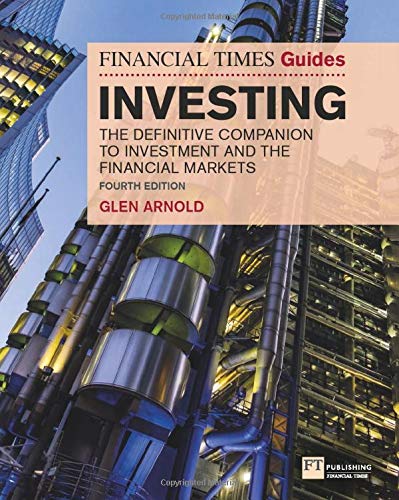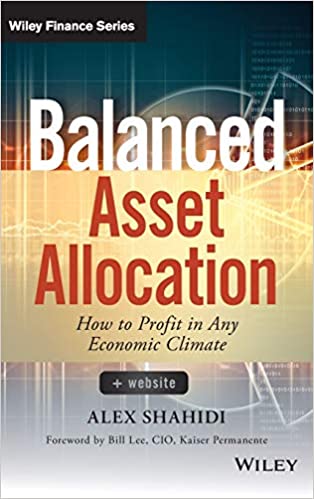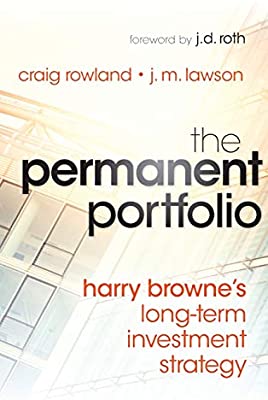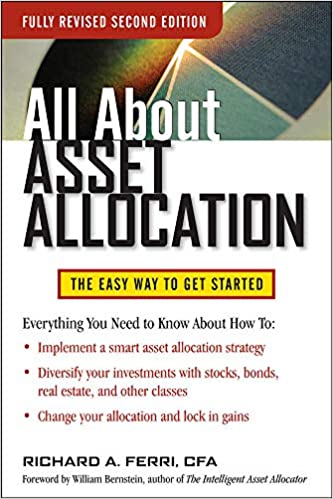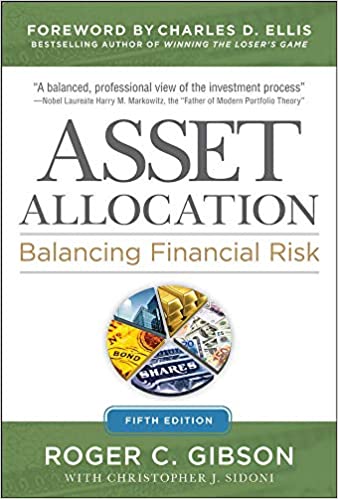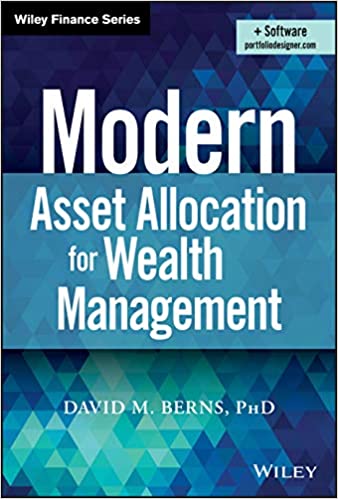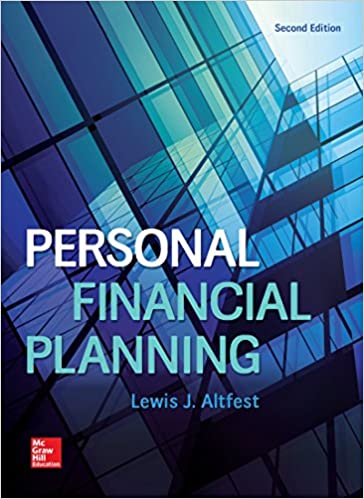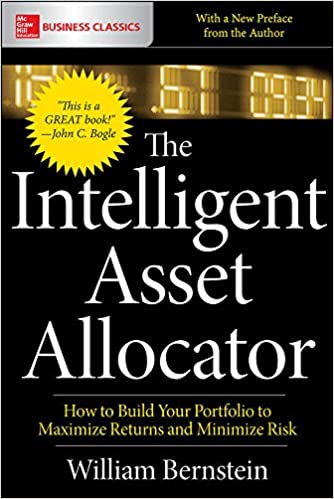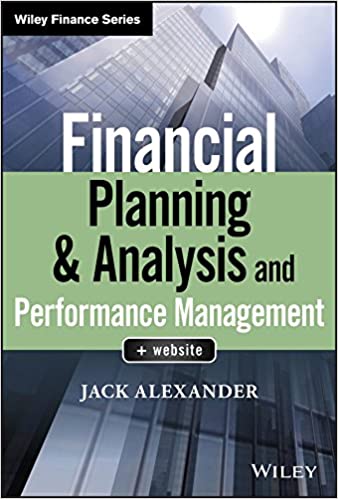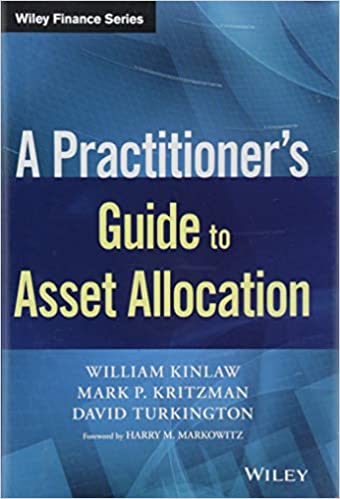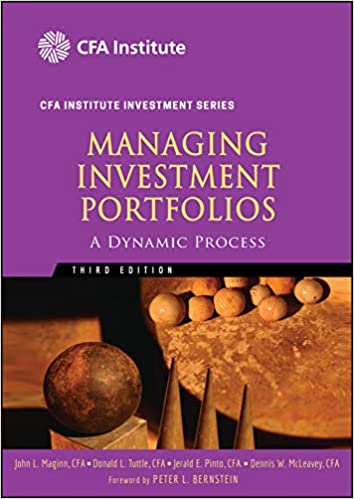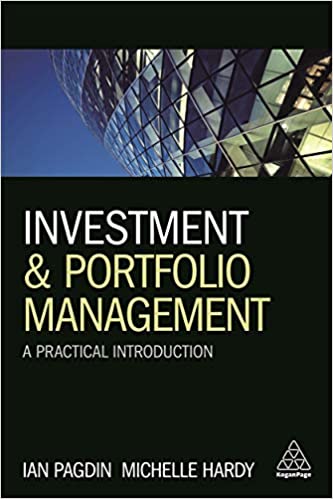Last updated: 20 December 2021. Welcome to my shortlist of the best asset allocation books available right now.
Asset allocation is perhaps the most important single investing decision you will make over the long term. The choice of how much of your portfolio you invest in the major asset classes such as equities, corporate bonds, property, commodities and so on will largely drive your return - regardless of your individual stock picks. In a rising tide, all boats rise. Your asset allocation judgements will determine whether you are rising with that tide or not.
I've included the best asset allocation books for beginners and the best asset allocation books for finance professionals, but have grouped these separately so that you can quickly find the titles which are suitable for you.
Asset allocation books can be pricey - with the average title costing between £20 - £50, however I'd like to make you aware that you can actually read most of them for free for a month with Amazon's Kindle Unlimited free trial, which allows you to read e-books on any device for a month for free.
As an Amazon Associate, I earn a small commission from qualifying purchases which helps to support this site. This does not impact how I compile the list. Happy reading!
Discover prime books on investing and finance
No boundaries, just your curiosity- Invest with confidence
- Finance industries
- Real estate & real assets
- Exotic investments
- The bigger picture
Books reviewed
Financial Expert 2024 Book Awards
Gold Prize
Financial Times Guides: Investing by Glen Arnold
Asset allocation books for students & serious learners
Take a shortcut to the excellence resources that professional investors use themselvesFinancial Expert tip: The hardcover versions of these financial planning books are in high demand! They can recoup up to 80% of their cover price when sold in good used condition.
Therefore if you plan to eventually sell back a title, your net cost could be as low as 20% of the cover price.
Click on the covers below to look at the used prices of these titles on Amazon to understand what cash back you could expect.
Asset allocation titles for finance professionals
Find technical reference guides and detailed insights into the wealth management industryDownload all these asset allocation books for free with Kindle Unlimited
You DON'T even need a Kindle device to download booksHere's a useful tip that will save you £100+ on asset allocation books. Sign-up to Amazon's Kindle Unlimited free trial, which offers access to all titles for free for 30 days.
- There's no obligation to continue with a paid subscription.
- You don't even need a Kindle to enjoy - any device will do.
If you're cost-savvy, you'll already be calculating the savings you could unlock and the knowledge you could gain by downloading 5 books over the next 30 days.
My Top 5 Asset Allocation Books for 2021
Click through any of the covers to see latest reviews and prices1. Asset Allocation: Balancing Financial Risk - Roger Gibson
Financial Expert Rating:
Synopsis:
"Investors long to beat the market, and money managers accept that as their mandate. The sad reality is that most money managers underperform the market, and individual investors do even worse. Investors also face emotional challenges. The irrational exuberance of the 1990s, for instance, can as easily derail a sensible investment strategy as the market panic accompanying the Global Financial Crisis.
Since Roger Gibson wrote the first edition of this book over 25 years ago, his multiple-asset class investment approach has given investors a disciplined strategy for mitigating risks and realizing their financial goals through widely varying market environments.
Grounded in the principles of modern portfolio theory, this fifth edition of his investing classic explains how and why asset allocation works. Gibson demonstrates how adding new asset classes to a portfolio improves its risk-adjusted returns and how strategic asset allocation uses, rather than fights, the forces of the capital markets to achieve financial success."
Who this book is for:
Asset Allocation: Balancing Financial Risk is the best asset allocation book for retail investors and finance professionals, in my view.
It's also received many five star reviews on Amazon; where Asset Allocation: Balancing Financial Risk is currently rated 4.6/5.0 on Amazon with 32 reviews.
This delivers a glowing endorsement for a title which sits upon my investing book shelf with great pride.
Other endorsements:
"Roger Gibson has revolutionized the way financial advisors assemble portfolios for their clients. He is, without a doubt, the best and most articulate voice on the subject of asset allocation today." -- DON PHILLIPS, President, Investment Research, Morningstar, Inc.
"[Gibson's book] should be of enormous benefit to the investor seeking the proper decision-making process. I congratulate [him] for treating the asset allocation subject in such depth and bringing this issue, which is the critical investment issue for all investors, to the forefront. It is the best overall piece of work I have seen." -- GARY P. BRINSON, President and CEO, GP Brinson Investments
Financial Expert Rating:
Synopsis:
"Everything You Need to Know About How To:
- Implement a smart asset allocation strategy
- Diversify your investments with stocks, bonds, real estate, and other classes
- Change your allocation and lock in gains
Trying to outwit the market is a bad gamble. If you're serious about investing for the long run, you have to take a no-nonsense, business like approach to your portfolio. In addition to covering all the basics, this new edition of All About Asset Allocation includes timely advice on:
- Learning which investments work well together and why
- Selecting the right mutual funds and ETFs
- Creating an asset allocation that’s right for your needs
- Knowing how and when to change an allocation
- Understanding target-date mutual funds"
Who this book is for:
All About Asset Allocation by Richard Ferri takes second place on our ranking of the best asset allocation books.
It gives great detail on what works, and what doesn't work when constructing your investment portfolio.
Written primarily for retail investors (but still carrying plenty of value for insiders), Richard's title seems to achieve it all, with coverage, conciseness and simplicity.
Other praise for All About Asset Allocation:
"All About Asset Allocation offers advice that is both prudent and practical--keep it simple, diversify, and, above all, keep your expenses low--from an author who both knows how vital asset allocation is to investment success and, most important, works with real people." -- John C. Bogle, founder and former CEO, The Vanguard Group
"With All About Asset Allocation at your side, you'll be executing a sound investment plan, using the best materials and wearing the best safety rope that money can buy." -- William Bernstein, founder and author, The Intelligent Asset Allocator [which incidentally is book #5 on this list!]
Financial Expert Rating:
Synopsis:
"The Financial Times Guide to Saving and Investing for Retirement will lead you through a bewildering maze of financial tools and provide advice on crucial investment decisions. It provides everything you need to know about how to save and invest so that you can successfully plan for your retirement. It is packed with invaluable information on taxes, ISAs, pensions, investing across different assets and buying property.
The Financial Times Guide to Saving and Investing for Retirement will help you:
- Identify your financial objectives and work out how to achieve them
- Learn how to invest for a specific goal and time
- Find out about taxes and other rules that may impact your wealth
- Understand why it’s essential to be actively involved in managing your post-work income"
Who this book is for:
The Permanent Portfolio is something of a biography blended with portfolio theory.
It's an unusual blend which actually works really well!
In The Permanent Portfolio, Craig Rowland and J.M. Lawson take us through principles behind creating a permanent portfolio, as followed by Harry Browne - a legendary investing analyst.
What's a permanent portfolio? It's a blend of investments which you can buy, and then immediately forget about.
Boom or bust, growth or recession, a permanent portfolio is designed to weather the storm and save you £00's in trading fees each year. It's a refreshing approach which isn't often discussed because many stockbrokers and industry bodies don't want to see the end of the huge trading volumes caused by panicked investors changing their minds every six months.
And with 77% five star reviews, I can see that the readership of this book agree with me.
Financial Expert Rating:
Synopsis:
"For students of finance at both undergraduate and postgraduate level, or those preparing for professional examinations, Investment and Portfolio Management develops knowledge and understanding of the key financial products, investment strategies and risks in financial markets in the UK and internationally.
With an emphasis on practice, Investment and Portfolio Management presents the theory and its relevance and application in the financial workplace.
The authors draw on their experience working in the financial sector to illustrate concepts with case studies, examples and problems, including material relevant to candidates studying for professional examinations offered by the major professional bodies in the subject area.
Each chapter is written in an easy-to-follow style, allowing readers to navigate their way through different topics without issue, avoiding complicated technical jargon, in favour of simpler terms and writing style."
Who this book is for:
If you're looking for one of the best asset allocation books, look no further than Investment & Portfolio Management: A Practical Introduction by Ian Pagdin and Michelle Hardy.
This is a current and up-to-date edition of a book used in investing courses and undergraduate programmes the world over.
And for the low price quoted on Amazon, you're able to skip straight to the knowledge by owning this book yourself.
In its 14 chapters, you'll cover fundamental backgrounds about risk and the financial markets. Followed by the roles of market participants and gradually you'll find yourself in chapters concerning detailed portfolio theory, which is the reason you bought the book.
I consider this book to be an excellent guide, and for under £50 it's a steal - university textbooks are usually priced at £60 - £80!
Financial Expert Rating:
Synopsis:
"This easy-to-understand guide provides everything you need, including:
* The basics of finance―historical, psychological, and institutional
* Time-tested strategies for improving the risk/reward ratio
* Ways to sharpen your focus to improve portfolio management
Bernstein walks you through the fundamentals of important topics like multiple-asset portfolios, optimal asset allocations, market efficiency, and strategy implementation.
No one knows the future of markets. Your forecast is as good as that of the last financial pundit you saw on TV. Trust your instincts, trust your research, and trust the proven-effect approach of The Intelligent Asset Allocator, and your portfolio will deliver returns through the blue skies and storms of financial markets."
Who this book is for:
Like any good asset allocation book, Bernstein's The Intelligent Investor includes chapters which cover many variations on multi-asset portfolios.
It also looks at how portfolios behave in the real world, and how an investor can practically manage a portfolio to stay true to their chosen asset allocation.
The Intelligent Investor is rated 4.3/5.0 at the time of writing, with 168 reviews which is very high for an asset allocation book.
This gives me additional credibility in recommending this title as book #5 in my asset allocation list.
Download all these asset allocation books for free with Kindle Unlimited
You DON'T even need a Kindle device to download booksHere's a useful tip that will save you £100+ on asset allocation books. Sign-up to Amazon's Kindle Unlimited free trial, which offers access to all titles for free for 30 days.
- There's no obligation to continue with a paid subscription.
- You don't even need a Kindle to enjoy - any device will do.
If you're cost-savvy, you'll already be calculating the savings you could unlock and the knowledge you could gain by downloading 5 books over the next 30 days.
Asset allocation will determine your investing success
"The difference between success and failure is not which stock you buy or which piece of real estate you buy, it's asset allocation."
As I explain in my article on the major asset classes, a sensible blend of asset classes will insulate your portfolio from stupid mistakes in the long run.
You might take a punt on a poor company which turns out to be folly in hindsight.
But that won't matter so long as your assets have been allocated to different investment classes, and diversified within those asset classes.
Building an investment portfolio is like designing a recipe which is tailored to you.
If you like the risk-reward trade-off of a particular investment type, then you can give it additional weighting. If you dislike another asset class - you could exclude it entirely.
But so long as you construct a portfolio which obeys the simple rules of asset allocation, and is coherent with the level of risk and volatility which you are happy with, then you cannot go too wrong.
Individual mistakes will quickly be forgotten, as the expected returns of each asset class at a macro level will show themselves over time.
This is why I say that asset allocation will determine your investing success. It's the ever-present background factor which ultimately determines your risk, and therefore ultimately drives your return.
If an investors portfolio severely disappoints over the long term, then it was likely that the asset allocation - not the individual investment selection - was incorrect.
Therefore, it's essential that you read one or two asset allocation books if you're serious about managing your own portfolio without the assistance of a financial adviser.
Selecting the best asset allocation books for beginners

"You should have a strategic asset allocation mix that assumes that you don’t know what the future is going to hold."
I was excited to read asset allocation books as a beginner.
Any asset allocation book worth its salt will include examples of real-world portfolios to facilitate a discussion of different approaches to asset allocation.
I liked that I could use these model portfolios as a starting point for my own portfolio; safe in the knowledge that these particular strategies were being applied by investment professionals in the real world.
I could then apply tweaks and changes to adapt them for my own preferences. Great asset allocation books for beginners explain how to do this without significantly changing the risk of the portfolio.
What do asset allocation books for beginners do differently to books for pros?
Beginner books will start from square one of portfolio theory, and explain (hopefully with visual aids) why portfolios work.
Why do professionals include bonds alongside equities in most portfolios? It's time to actually see why, with numbers to prove it.
Why do some portfolios include two asset classes, whereas some other include 7? Are more asset classes better than fewer? These questions and more will be covered in a beginner book.
An author will assume that the reader of a beginner book will be a retail investor, investing their own money. Therefore, any references to ETFs or funds will hopefully be examples which are publicly traded and accessible to retail investors, rather than funds for institutional investors only.
This increases the ease with which you may be able to apply what you've learned in your own portfolio. Of course, due to the time that has passed since the books publication, fund names may change, or you may find a better fund in your local market. That is to be expected.
What does good asset allocation look like?
For a few quick examples of asset allocation, take a look at my own asset allocation which I shared a year ago.
My asset allocation has since evolved, due to changing financial priorities more than anything, but this gives a quick snapshot of what a real retail investor portfolio might look like.
Is cash an asset class?
When comparing institutional portfolios (e.g. that of a pension scheme), with an individual investor's portfolio, one key difference will be the management of cash. Cash is indeed one of the main asset classes, and should not be underestimated. Cash provides short-term stability in the valuation of the portfolio, and provides a low-risk, low return. Cash is highly exposed to inflation risk, however, as its spending power can be eroded over time as the value of a currency diminishes.
Individual investors have access to fixed term or instant access savings accounts, which in the UK are afforded a form of government guarantee up to a specified level. These accounts can yield between 0% - 3% depending on the length of the period you are prepared to tie-up that money.
This is not an option for a pension fund, as the guarantee only covers (at the time of writing) £85,000 per deposit. Any pensions scheme would quickly exhaust that allowance. Therefore, institutions tend to invest cash in short-term liquid debt instruments known as 'notes' or 'treasuries' in the US.
These usually offer a poorer risk-adjusted return than a savings account, but are far easier to liquidate at short notice if required.
Explore the best books in more genres
General personal finance
Trading the financial markets



